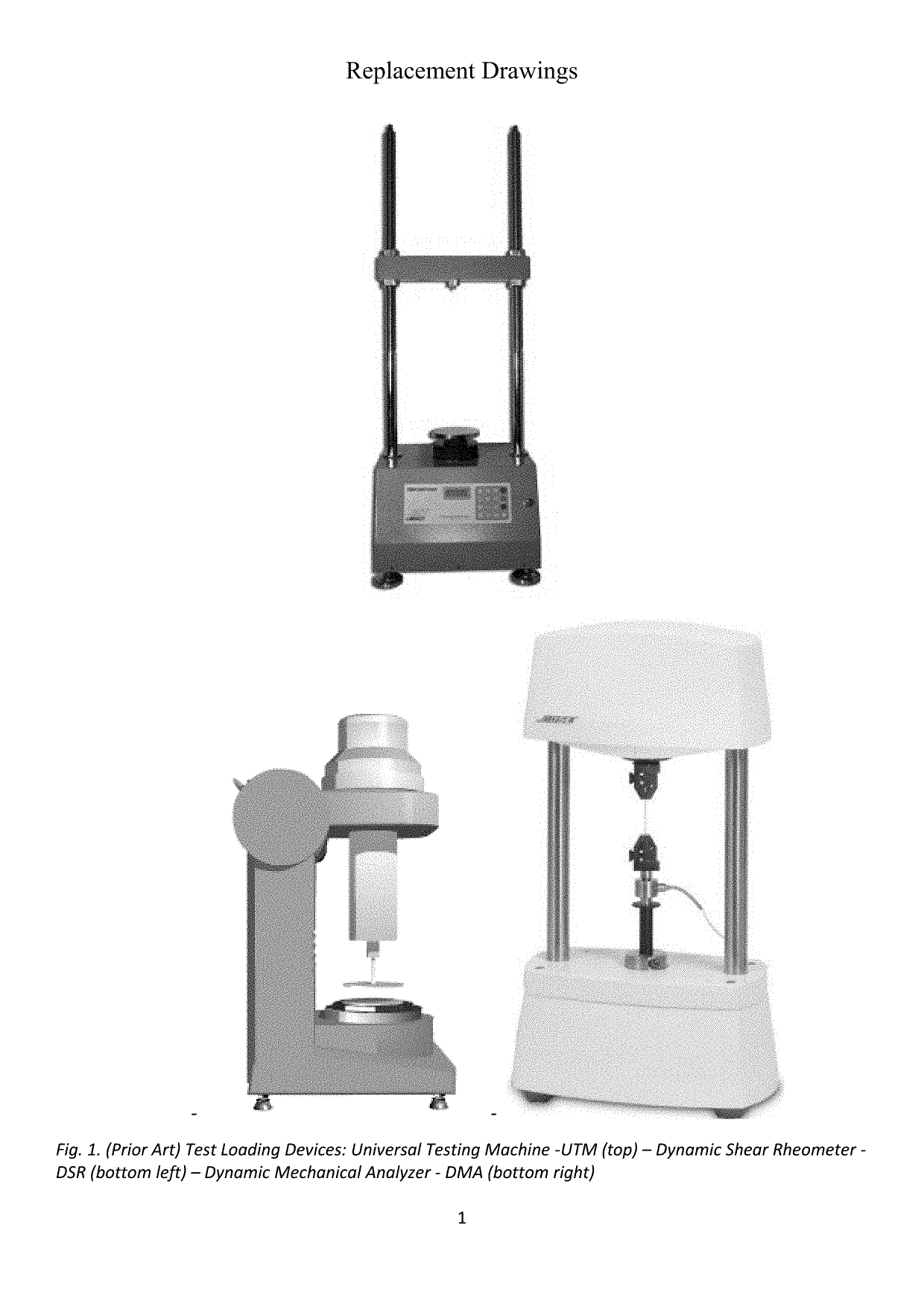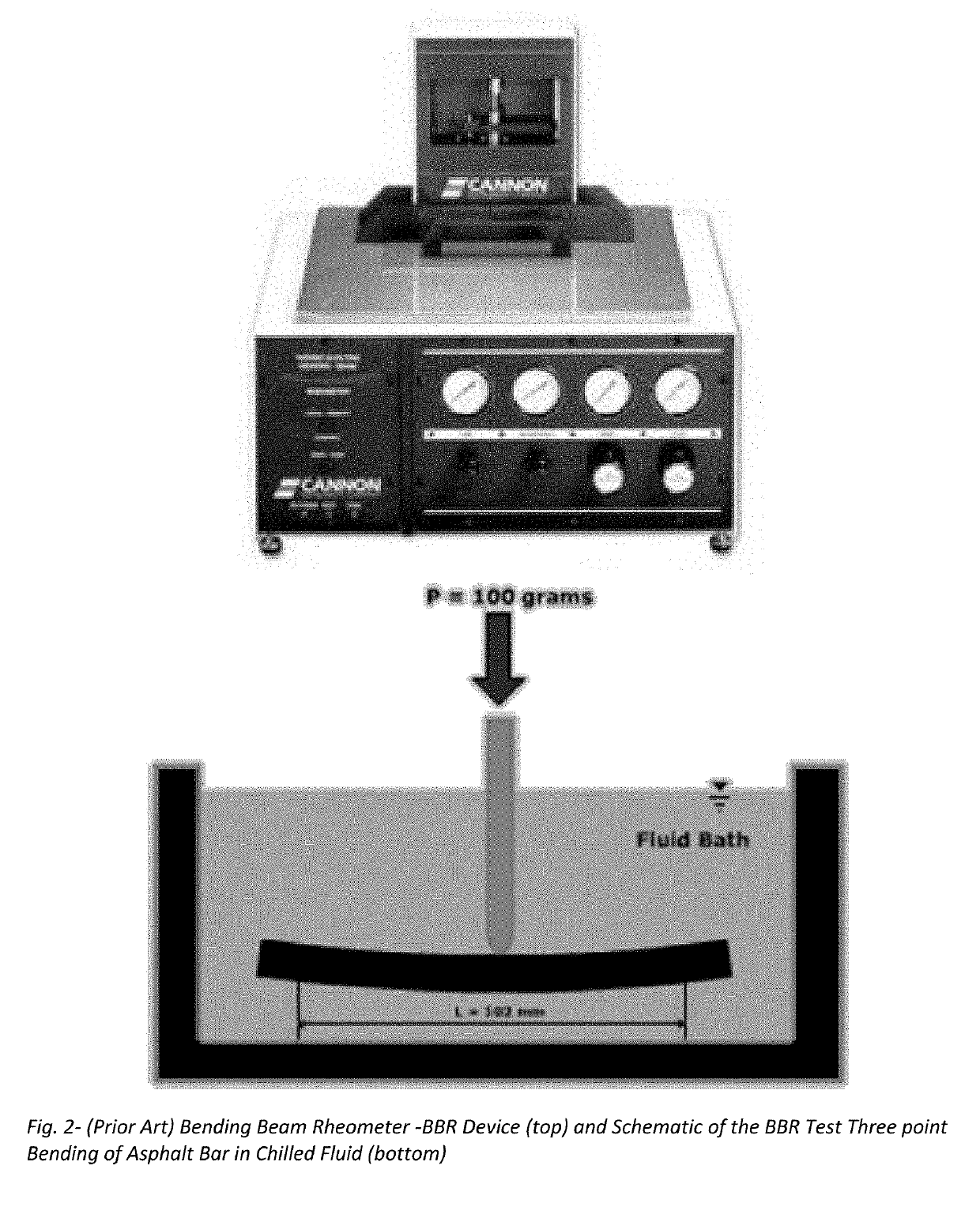Unified performance test for viscoelastic materials
a viscoelastic material and performance test technology, applied in the direction of material analysis, working-up pitch/asphalt/bitumen by thermal means, instruments, etc., to achieve the effect of improving the current technology
- Summary
- Abstract
- Description
- Claims
- Application Information
AI Technical Summary
Benefits of technology
Problems solved by technology
Method used
Image
Examples
first embodiment
New Asphalt Mixture Residue (AMR) Recovery Method
[0084]Asphalt Mixture Residue (AMR) is the fine portion of asphalt mixture having particles with a predetermined maximum diameter. The new and improved method of determining the effect of recycled material on asphalt performance in the present invention is by physically separating AMR from asphalt mixture without the use of chemical solvents which have caused numerous problems during the binder extraction / recovery process, some of which was described in the prior art. The physical separation of asphalt fine particles from the aggregate particles may be performed by various means.
[0085]FIG. 9 shows one method of recovering AMR from asphalt mixture which is by heating the mixture on a non-stick surface (e.g., surface coated with silicon or Teflon) and then manually or mechanically mixing the heated mixture. When the mixture is removed from the surface, a trace of fine particles remain, sticking to the surface. Subsequently, the surface ...
second embodiment
New and Innovative DSR Specimen Mounting Method
[0088]Proper mounting of the VEM on a DSR parallel plate is important for the conduct of the test. In the normal and low temperature DSR tests where high stress levels are utilized, lack of sufficient adhesion between the VEM specimen and the plates can cause partial or complete detachment of the VEM from one surface that will affect the test results. As discussed in prior art, current asphalt mounting method in AASHTO T 315 disturbs the sample at the edge of plates and is a major factor in test result variation (FIG. 7), the mounting temperatures of T 315 are not sufficient to provide proper adhesion to the plates, and manual trimming is not suitable for VEM with fine particles. Therefore, a new and improved VEM mounting method is disclosed in this invention for the uniform and symmetrical placement of the VEM and for achieving good adhesion between VEM and the two plates. This method is suitable for mounting virgin and aged asphalt bi...
third embodiment
Improved High-Temperature Test Using PLS Method
[0113]The present invention discloses a new and innovative methodology for testing VEM at high-temperature using a Pulsating Dynamic Shear Rheometer (DSR). The invention comprises mounting the VEM specimen on a DSR, setting the temperature to a predetermined hot temperature and allowing sufficient time for the uniform spread of temperature, and applying a Pulse Load Series (PLS) of a first predetermined stress until the test reaches the Stable Region (SR) and does not reach Unstable Region (UR).
[0114]FIG. 19 shows an example of high temperature test using PLS method on DSR for a PG70-22 binder at three temperatures where the SDC at 70° C. is around 29%. In this example, the pulse stress level was 5.0 kPa for duration of 0.1 s and Stable Region was reached after 20 cycles of one second each. Optionally, the stress may be increased to a second and third predetermined levels and the PLS be repeated at each level stress level to provide an ...
PUM
| Property | Measurement | Unit |
|---|---|---|
| time | aaaaa | aaaaa |
| time | aaaaa | aaaaa |
| particle size | aaaaa | aaaaa |
Abstract
Description
Claims
Application Information
 Login to View More
Login to View More - R&D
- Intellectual Property
- Life Sciences
- Materials
- Tech Scout
- Unparalleled Data Quality
- Higher Quality Content
- 60% Fewer Hallucinations
Browse by: Latest US Patents, China's latest patents, Technical Efficacy Thesaurus, Application Domain, Technology Topic, Popular Technical Reports.
© 2025 PatSnap. All rights reserved.Legal|Privacy policy|Modern Slavery Act Transparency Statement|Sitemap|About US| Contact US: help@patsnap.com



